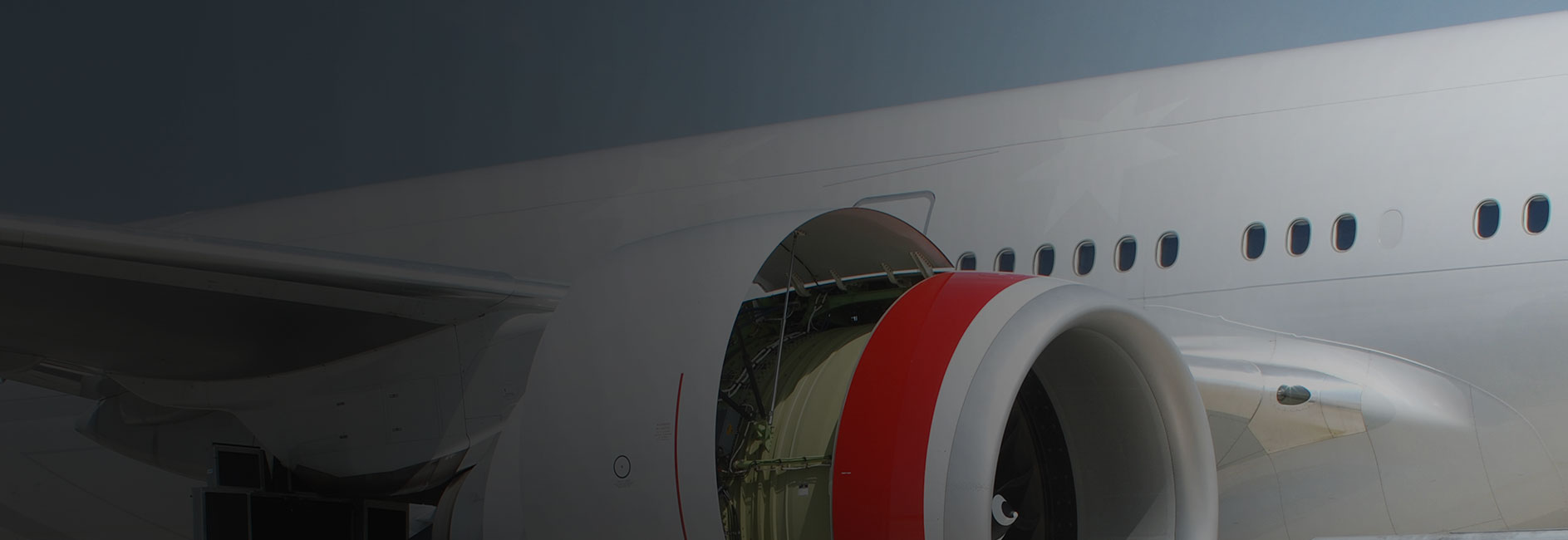
We strive to minimise our environmental footprint and are committed to ensuring that we conduct our operations efficiently to conserve resources and reduce waste.
Recognising that our customers place equal emphasis on environmental sustainability, we leverage our engineering and innovation expertise to develop solutions that are not only effective in meeting their needs, but are also sensitive to environmental concerns.
Read about our sustainability efforts and stories below.
Keeping Aircraft Engines Fuel Efficient
Our patented EcoPower® aircraft engine wash system helps operators achieve significantly better performance recovery compared to the traditional wash methods.
Our customers typically wash their engines twice a year, using our solutions to keep them clean for low operating temperatures and optimal fuel efficiency. By utilising a closed-loop wash process, we collect and filter the water to produce pure, deionised water for reuse. Through this method, we maximise the use of water during each wash and generate only filter elements as waste.
Extending Life Cycle through Repurposing and Recycling
We give new lease of life to retired passenger aircraft by repurposing them into freighters. Our end-to-end solutions effectively extend the economic life of these aircraft, turning them into high performing freighters, helping customers to scale their operations, reduce costs and boost cargo capacity. Our conversion solutions comprising the Airbus A320/A321 and A330 family are also more technologically advanced and eco-friendly.
We are also in the process of repurposing a Boeing 757 passenger aircraft into the world’s first 757 Passenger-to-Tanker to enhance aerial firefighting efforts. Developed in collaboration with U.S.-based Galactic Holdings LLC, this groundbreaking conversion solution will extend the operational life of passenger jets while improving wildfire containment. By reducing greenhouse gas emissions and safeguarding forested areas, this initiative underscores our commitment to environmental sustainability.
Reducing Waste with On-demand Printing
We help the industry work towards a waste-free future with our one-stop additive manufacturing solutions and growing digital library of airworthy parts. By enabling on-demand printing of cabin interior and aerospace replacement parts, we help operators reduce inventory holdings and waste in raw materials.
As printed components are generally lighter and stronger than those made using existing manufacturing methods, they can also help to improve fuel efficiency and lower life cycle cost through prolonged durability.
Harnessing Solar Energy to Reduce Carbon Footprint
Since 2018, we have been leveraging solar energy to decrease our reliance on fossil fuels and reduce our carbon footprint. The solar panels installed at our three aerospace facilities in Singapore generate clean energy, fulfilling approximately 40% of our electricity needs and cutting our annual emissions by around 4,500 metric tons of CO2 equivalent (tCO2e). In recognition of these efforts, we received an Honourable Mention for Excellence in Energy and Greenhouse Gas Management from Singapore’s National Environment Agency in 2023.
Globally, we are committed to expanding such green energy initiatives where feasible to support our long-term emissions reduction targets. For example, in Dresden, Germany, our joint venture Elbe Flugzeugwerke’s facility now obtains 100 percent of its electricity from renewable sources, including from solar panels installed across its hangar roofs.
Revolutionising Traditional Operations with Unmanned Solutions
Today, drones are increasingly explored and applied in day-to-day operations of the logistics sector as they are able to provide quicker, more cost-effective and greener delivery solutions. We help to meet this rising demand and interest by developing versatile Unmanned Air System (UAS) solutions that revolutionise traditional operations in shore-to-ship parcel delivery, food delivery and more.
When combined with features including real-time data analytics, our UAS solutions can also be used in manual work processes such as infrastructure and security inspection, making them safer, more efficient and more effective.
We innovate our aircraft engine nacelles to trim aircraft fuel consumption and carbon emissions. Starting right from the conceptualisation and design stage, we collaborate with engine OEMs to develop integrated propulsion systems that help to lead to engines with lower weight, less fuel burn, less community noise and yet have better aerodynamics. We are currently involved with two nacelle systems that have been developed for integrated propulsion systems. We are currently involved with two nacelle systems that have been developed for integrated propulsion systems; both programmes are developed with Safran Nacelles through our Nexcelle joint venture.
Our design features typically have individual entitlements of less than 1% as measured by fuel burn (consumption), and add up eventually to become part of the overall effort to cut fuel burn and emissions progressively on new aircraft.
Copyright © 2025 ST Engineering
By subscribing to the mailing list, you confirm that you have read and agree with the Terms of Use and Personal Data Policy.